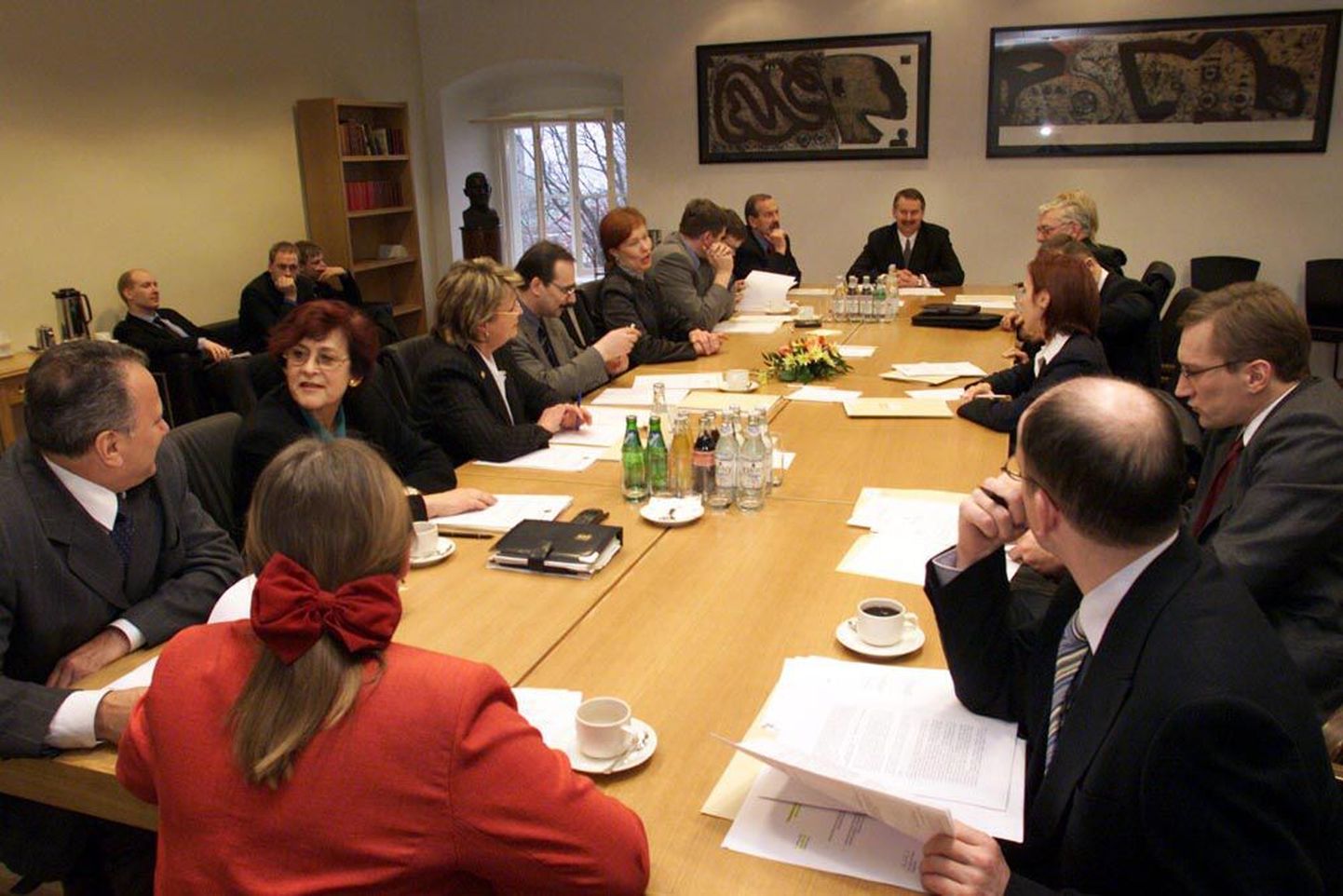
Distribution of ministerial posts by upcoming Reform Party/Soc Dems coalition only feels fresh at first glance.

Distribution of ministerial posts by upcoming Reform Party/Soc Dems coalition only feels fresh at first glance.
Since regained independence, ministerial portfolios have been devised, discarded and divided according to political or practical needs of the moment as sensed by those in power.
Also, portfolios have been added in the name of coalitional balance – then thrown away as partner changes. A fresh example of this being what’s now happening with regional minister post. The planned divisions of domains of economy/communication ministry and of social ministry, however, is essentially quite a return to the times of ten years ago as the government of Juhan Parts tried to better arrange governance of large domains by creating assistant-minister jobs.
Especially so with economy ministry: to the current solution, it’s been one long and winding road. As early as Mart Laar govt No 1 and the so-called Christmas Peace government of Andres Tarand, economy ministry hosted two ministers: economy minister, and the non-portfolio energy minister Arvo Niitenberg (1934–2003) whose task it was to manage Estonia’s energy production and liquidation of Paldiski nuclear facility.
With Tiit Vähi entering his first second term in office, in 1995, only one minister continued. In Estonia, it slowly started to dawn that state apparatus should not be blown too big. In 1997, ministers Raivo Vare, Jaak Leimann and Mart Opmann made waves with an initiative to that end, also involving merger of economy minister with ministry of roads and communications.
In 1998 while Mart Siimann was in power, for a while it looked like the two ministries were indeed going to be united. A corresponding proposal was voiced by administrative reform committee at the government; the merged ministry was supposed to be launched either in 1999 or at the beginning of 2000, latest. Main reason listed was savings from administration.
In reality, election campaign soon started and ministries merger lost momentum. Even the triple-union rising to power in 1999 wanted nothing to do with it – the new economy minister Mihkel Pärnoja thought the proposal meant no substantial savings.
At long last, the merger was consummated by govt of Siim Kallas, in 2002. Centre Party and Reform Party wrote it into their coalition agreement, citing «enhancing austerity policy on state level». All at once, Liina Tõnisson became minister of economy as well as roads and communication, for many a month hopping between the two buildings.
Officially, the merger happened in November 2002, preceded by considerable confusion. Under headlines Price of Ministry Merger Unknown and Joint Ministry Keeps Employees in Suspense, Postimees covered the happenings: the officials were kept in a state somewhat nervous, not knowing who will stay and who will go.
Discussions also abounded around the name of the combined ministry. Then finance minister Harri Õunapuu favoured the simple «economy ministry»; in the end, however, they went for the clumsy «ministry of economic affairs and communication».
As the Juhan Parts’ government came to power in 2003, it undertook to rearrange ministries once again: this time around, it wasn’t about mergers; rather, every minister got the chance to hire and assistant-minister. This was supposed to be panacea against forced politisation of officials – assistant-minister, pursuant to law, is only in office as long as his minister maintains post.
The first assistant-minister was hired in 2003 by social minister Marko Pomerants, to help with health care issues. The job went to Külvar Mand, former emergency care chief in Pärnu. The distribution of tasks back then was a lot like it’s planned today: the «real» minister dealing with social welfare, the porfolioless one tackling healthy care and employment. The last time Estonia had an absolutely separate health care minister was in the monetary reform times.
Economy minister only got an assistant-minister during the second Andrus Ansip government – minister Juhan Parts hired Siim-Valmar Kiisler. Pretty soon, however, IRL decided to change the regional minister and Mr Kiisler was played into that field. Thereafter, assistant-minister post at economy ministry remained empty.
In 2003–2011, a period covering three governments, quite a bunch of assistant-ministers passed through ministries. The environment ministry assistant-minister Olavi Tammemäe, for instance, survived several bosses. Still, by the end of Ansip govt No 2, assistant-ministers had been basically given up, the posts abolished. Still, till today assistant-ministers might be hired pursuant to Government of the Republic Act.
The traditional portfolio-less posts (i.e. ministers not leading a definite ministry) of Estonia have been population minister and regional minister. Population minister was created in the first government of Mart Laar, in fall of 1993, while national issues were a lot sharper in Estonia, especially in Narva, than today. The post was assumed by literary scholar Peeter Olesk. The last population minister we’ve had was soc dem Urve Palo, a lady now likely to be included in the cabinet.
As Prime Minister Mr Ansip kicked soc dems out of his government in May 2009, a new population minister was not appointed; Ms Palo’s tasks were distributed among four ministries. That created quite a stir as, by then, only two years had passed since the Bronze Night of 2007 and many feared that a signal would thus be sent to the Russian population: dealing with your problems isn’t important for Estonian government. No trouble arose, though.
Regional minister appeared on Estonia’s political map with the government of Andres Tarand, role played by Eiki Nestor. For a time, this was quite an invisible B-post at interior ministry; over these past years, however, Mr Kiisler (IRL) has been the public embodiment of IRL’s endeavours to simplify administrative arrangement of local governments. The coalition gathering next week has apparently deleted not the minister only, but also his goal linked to a party left outside the government.